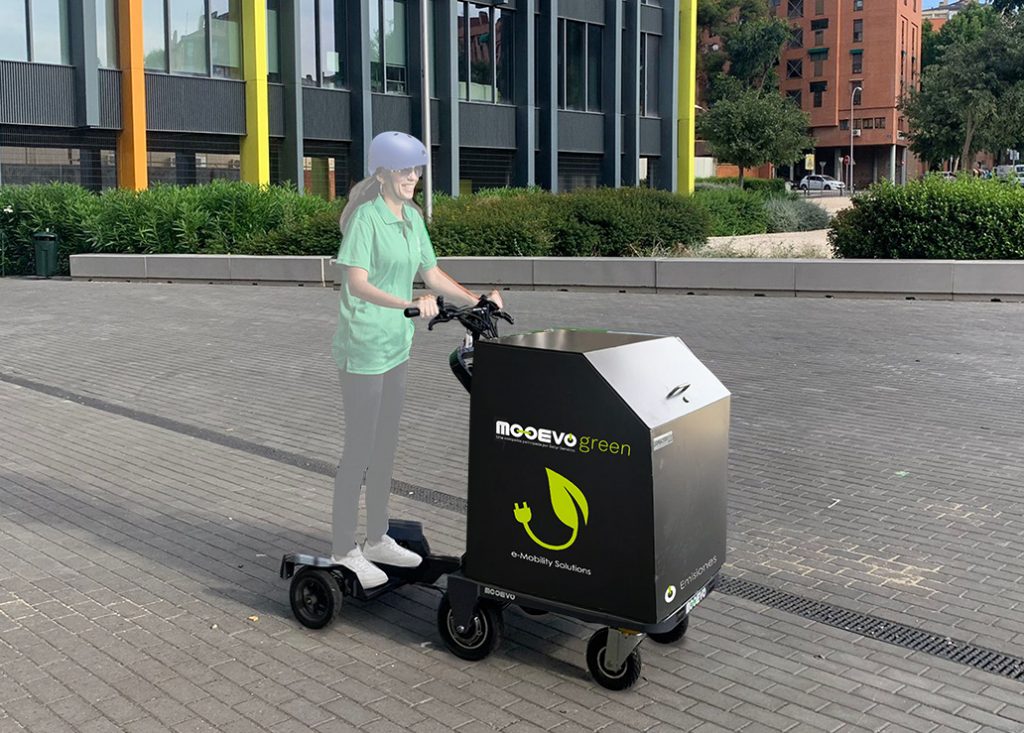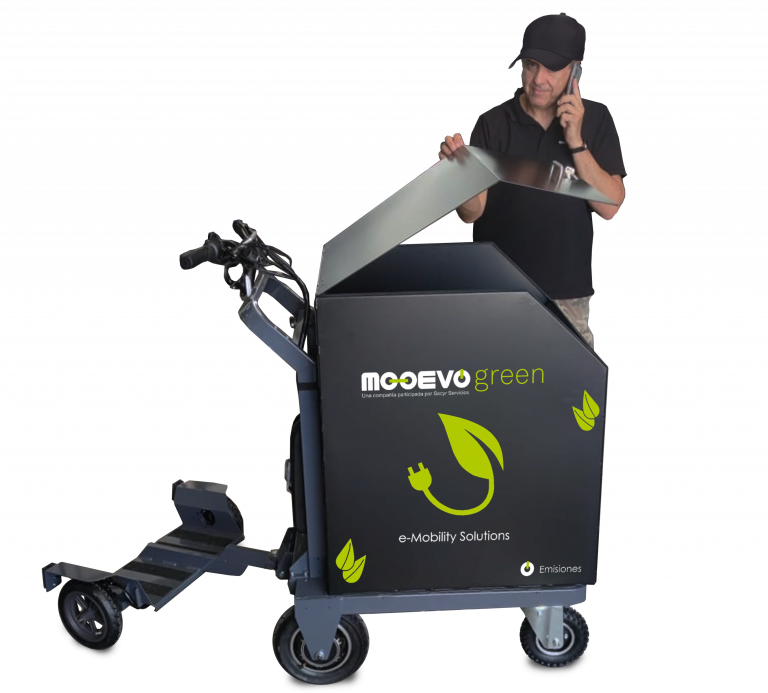Electric micro mobility for urban delivery with electric scooters, trikes and motorized trolleys by MOOEVO Green. MOOEVO electric delivery carts are a combination of an electric scooter and a delivery or delivery cart, uniting both concepts in a way that allows you to do the tasks of both tools. In trolley mode, you can walk it along sidewalks, pedestrian areas or even enter buildings and homes to deliver.
In scooter mode, it transports you down the driveway or street like an electric personal mobility vehicle. The use of electric cars for home deliveries has great benefits for delivery people and the ecosystem. Due to its small size and easy handling, it is a versatile, comfortable and flexible means of transport.
These have better mobility than other vehicles, allowing you to easily switch between stopped traffic or take alternative routes if necessary. This, in turn, means a quick arrival at the place of delivery and a gain in free time.
Electric mobility for urban delivery has gained significant attention and popularity in recent years due to its environmental benefits and cost savings. Electric vehicles (EVs) offer a sustainable and efficient solution for last-mile delivery, reducing pollution, noise, and dependence on fossil fuels. Here are some key points to consider regarding electric mobility for urban delivery:
- Environmental Benefits: Electric vehicles produce zero tailpipe emissions, helping to improve urban air quality and reduce greenhouse gas emissions. They contribute to a cleaner and healthier urban environment by reducing noise pollution as well.
- Cost Savings: While the upfront cost of electric vehicles is generally higher than traditional combustion engine vehicles, they offer long-term cost savings. Electric vehicles have lower operating costs due to the lower price of electricity compared to gasoline or diesel. They also require less maintenance since they have fewer moving parts and don’t require oil changes.
- Incentives and Subsidies: Many governments and local authorities provide incentives and subsidies to promote the adoption of electric vehicles. These can include tax credits, grants, rebates, or subsidies for the purchase of EVs, installation of charging infrastructure, or other related expenses. Such incentives help reduce the initial investment and make electric mobility more attractive for urban delivery fleets.
- Charging Infrastructure: A robust and widespread charging infrastructure is crucial for the successful implementation of electric mobility for urban delivery. Establishing a network of charging stations at strategic locations such as delivery hubs, depots, and public areas ensures that delivery vehicles have access to convenient and reliable charging options. Governments, businesses, and charging infrastructure providers are actively working to expand the charging infrastructure to support electric mobility growth.
- Range and Charging Time: The range anxiety associated with electric vehicles has improved significantly with advancements in battery technology. Modern electric delivery vehicles offer sufficient range to cover typical urban delivery routes. Additionally, rapid charging technology is evolving, reducing charging times and allowing vehicles to quickly recharge during breaks or shift changes.
- Vehicle Selection: There is a growing variety of electric vehicles suitable for urban delivery, including vans, trucks, and cargo bikes. Delivery fleet operators should consider their specific needs, such as payload capacity, range, and charging infrastructure availability when selecting electric vehicles. It’s important to choose vehicles that align with the operational requirements and maximize efficiency.
- Data and Analytics: Fleet management software and telematics solutions can help optimize the operation of electric delivery fleets. They provide real-time data on vehicle performance, battery range, charging status, and route optimization, enabling fleet operators to make informed decisions and improve efficiency.
- Collaborations and Partnerships: Public-private collaborations and partnerships are essential for the successful implementation of electric mobility for urban delivery. Governments, delivery companies, vehicle manufacturers, charging infrastructure providers, and energy companies need to work together to address infrastructure challenges, develop supportive policies, and foster innovation.
Electric mobility for urban delivery holds great potential for transforming the logistics industry, creating more sustainable and efficient urban environments. By embracing electric vehicles and establishing the necessary infrastructure, cities and businesses can reduce their carbon footprint and contribute to a greener future.


